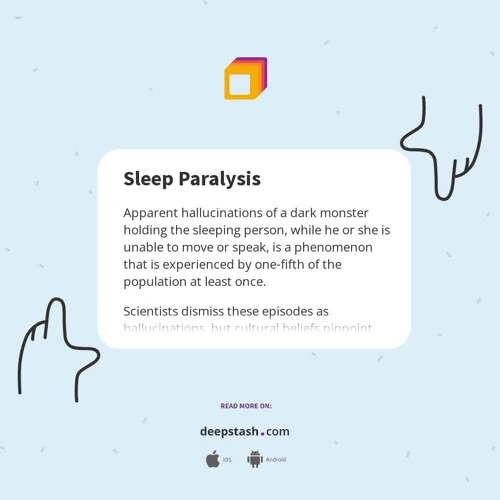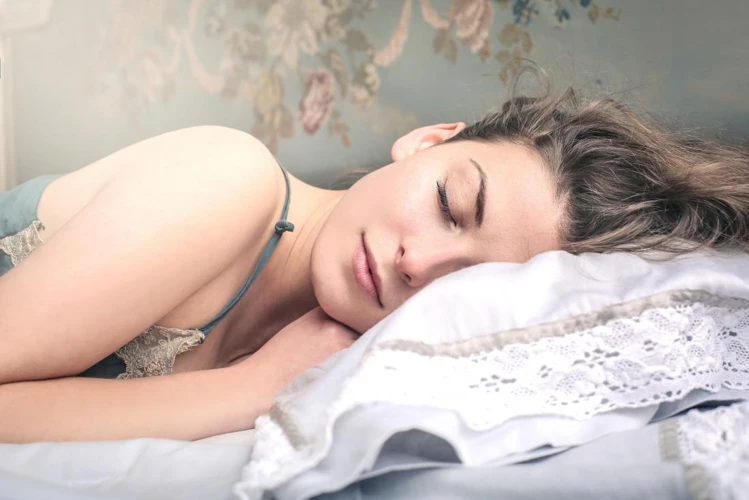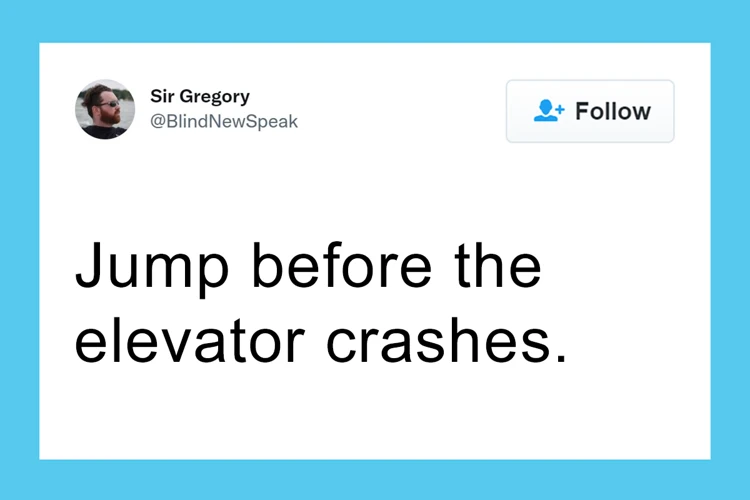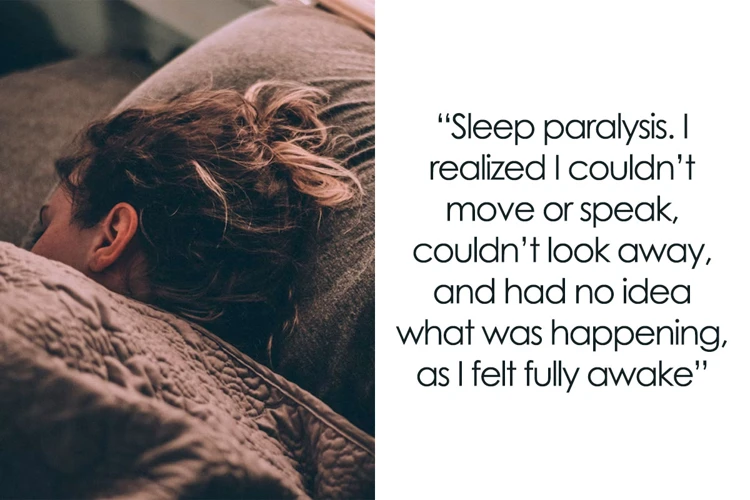Have you ever woken up in the middle of the night, unable to move your body, and felt a sense of terror wash over you? If so, you may have experienced sleep paralysis. Sleep paralysis is a fascinating and often misunderstood phenomenon that has been the subject of many myths and misconceptions. In this article, we will delve into the world of sleep paralysis, debunking common myths and providing you with a step-by-step understanding of this intriguing sleep disorder. So, prepare to unravel the mysteries of sleep paralysis as we explore its definition, mechanics, and the truth behind supernatural beliefs, safety concerns, and much more.
Defining Sleep Paralysis

Sleep paralysis is a perplexing experience that leaves individuals feeling trapped and immobilized while transitioning between sleep and wakefulness. Sleep paralysis occurs when the brain is awake and alert, but the body remains in a state of muscle atonia, or temporary paralysis. This state prevents individuals from acting out their dreams and ensures the body stays still during sleep. It is often accompanied by vivid hallucinations and an overwhelming sense of fear or unease. While sleep paralysis has been the subject of numerous unexplained stories and art, it is important to understand the scientific basis behind this phenomenon. To gain a comprehensive understanding of sleep paralysis, it is essential to explore the mechanics of this sleep disorder and its relation to other sleep phenomena, such as lucid dreaming (source).
What is Sleep Paralysis?
Sleep paralysis is a fascinating phenomenon that can be described as a temporary inability to move or speak when waking up or falling asleep. During an episode of sleep paralysis, a person may become aware of their surroundings but find themselves unable to physically respond or move their body. This state of paralysis typically lasts for a few seconds to a couple of minutes, but it can feel much longer for the individual experiencing it. Sleep paralysis is often accompanied by hallucinations, which can range from auditory sensations to vivid visual experiences. These hallucinations may create a sense of intense fear or anxiety, contributing to the overall distress of the sleep paralysis episode.
While the exact cause of sleep paralysis is not fully understood, researchers have identified several potential factors that may contribute to its occurrence. A disruption in the normal sleep cycle, particularly during the stages of rapid eye movement (REM) sleep, is thought to play a role in triggering sleep paralysis. REM sleep is the stage of sleep associated with vivid dreaming, and during this stage, the brain sends signals to inhibit movement to prevent the individual from physically acting out their dreams. Sleep paralysis occurs when this inhibition extends beyond the REM stage, temporarily keeping the muscles paralyzed even after the person has regained consciousness.
It is important to note that sleep paralysis is a relatively common phenomenon, with many individuals experiencing at least one episode in their lifetime. While it can be a distressing experience, it is generally considered harmless and not indicative of any underlying health conditions. Understanding what sleep paralysis is and its potential causes can help individuals gain a sense of control and reduce anxiety associated with future episodes. Exploring the science behind sleep paralysis can shed light on this intriguing sleep disorder (source). Additionally, sleep paralysis has inspired creative works in art, serving as a source of inspiration for famous artists (source).
The Mechanics of Sleep Paralysis
During sleep, our brains cycle through different stages, including the rapid eye movement (REM) stage and non-rapid eye movement (NREM) stages. Sleep paralysis most commonly occurs during the transition between these stages. When we enter REM sleep, our brain activity increases, and our muscles naturally enter a state of temporary paralysis to prevent us from acting out our dreams. This muscle atonia is orchestrated by inhibitory signals sent from the brainstem to the muscles, effectively immobilizing the body. However, in sleep paralysis, these signals are mistakenly sent and received while the individual is awake or transitioning to wakefulness, resulting in a temporary and sometimes terrifying state of paralysis. It is important to note that though consciousness is intact during sleep paralysis, muscle movement is inhibited, leading to a feeling of helplessness. Sleep paralysis typically lasts for a few seconds to a couple of minutes, but during that time, individuals may experience vivid hallucinations, which can add to the distressing nature of the experience.
Common Myth #1: It’s a Supernatural Experience

One common myth surrounding sleep paralysis is that it is a supernatural or paranormal experience. This belief often originates from the vivid hallucinations that accompany sleep paralysis episodes. People may interpret these hallucinations as encounters with ghosts, demons, or other supernatural entities. However, it is important to debunk this supernatural belief and understand that sleep paralysis is a natural physiological process that occurs within the brain and body. These hallucinations are a result of the brain still being in a semi-dream state while the body is temporarily immobilized. While the experience may feel frightening and otherworldly, there is a scientific explanation for these hallucinations that does not involve the supernatural realm (source).
Busting the Supernatural Belief
Busting the Supernatural Belief surrounding sleep paralysis is crucial to dispel misconceptions and provide a scientific understanding of this phenomenon. While many individuals have associated sleep paralysis with supernatural experiences, it is important to note that there is no evidence to support these beliefs. Sleep paralysis is a physiological event that occurs due to the overlap of wakefulness and REM sleep. During REM sleep, the brain is highly active, and most dreaming occurs. When we enter REM sleep, the brain releases chemicals that inhibit muscle movement, protecting us from acting out our dreams. However, in the case of sleep paralysis, this muscle atonia persists as we become consciously awake, resulting in the inability to move. These episodes can also be accompanied by hallucinations, as the brain continues to generate dream-like imagery. While these hallucinations can feel incredibly vivid and often unsettling, they are a product of the mind and not evidence of supernatural occurrences. It is important to separate fact from fiction and recognize sleep paralysis for what it truly is – a fascinating but natural phenomenon (source).
Scientific Explanation
Scientific Explanation
– Hypnagogic and Hypnopompic Hallucinations: One of the key elements of sleep paralysis is the occurrence of hallucinations during the transition between sleep and wakefulness. These hallucinations are known as hypnagogic hallucinations when they happen upon falling asleep and hypnopompic hallucinations when they occur upon waking up. These vivid sensory experiences can range from seeing shadowy figures or hearing strange sounds to feeling a presence in the room. They are a result of the brain transitioning between different states of consciousness and can be attributed to the activation of the brain areas responsible for dreaming.
– Rapid Eye Movement (REM) Sleep and Atonia: During normal sleep, our sleep cycle consists of different stages, including REM (Rapid Eye Movement) sleep. REM sleep is the stage where most dreaming occurs. During this stage, the brain sends signals to the body to inhibit muscle movement, leading to temporary muscle atonia or paralysis. This is a protective mechanism that prevents us from physically acting out our dreams. In sleep paralysis, the brain partially wakes up while the body remains in this state of muscle atonia, resulting in the inability to move.
– Sleep Disorders and Sleep Paralysis: While sleep paralysis can occur in isolation, it is often associated with other sleep disorders such as narcolepsy or sleep apnea. Narcolepsy is a neurological disorder characterized by excessive daytime sleepiness and a disruption in the regulation of sleep-wake cycles. Sleep paralysis is a common symptom experienced by individuals with narcolepsy. Sleep apnea, on the other hand, is characterized by interrupted breathing during sleep, leading to frequent arousals. These frequent awakenings increase the likelihood of experiencing sleep paralysis episodes.
Understanding the scientific explanation behind sleep paralysis helps dispel the supernatural beliefs often associated with this phenomenon. It highlights the role of the brain’s transitions between sleep and wakefulness, the inhibition of muscle movement, and its connection to other sleep disorders. By delving into the science behind sleep paralysis, we can gain a deeper understanding of this intriguing sleep phenomenon.
Common Myth #2: It Only Happens to Those with Sleep Disorders

One common myth surrounding sleep paralysis is that it only affects individuals who have pre-existing sleep disorders. However, this belief is far from the truth. While sleep disorders such as insomnia, narcolepsy, and sleep apnea can increase the likelihood of experiencing sleep paralysis, it can actually occur in individuals who have no history of these conditions. Sleep paralysis is a complex phenomenon that can be triggered by a variety of factors, including sleep deprivation, irregular sleep patterns, stress, anxiety, and even certain medications. It is important to debunk the misconception that sleep paralysis is exclusive to those with sleep disorders and recognize that it can happen to anyone under certain circumstances. Understanding the true scope of sleep paralysis helps to dispel misunderstandings and allows individuals to seek appropriate support and guidance if they experience this phenomenon.
Misconception Debunked
Misconceptions about sleep paralysis are prevalent, and one of the most common misconceptions is that it only happens to those with sleep disorders. However, this belief is firmly debunked by scientific research. Sleep paralysis can happen to anyone, regardless of whether they have a diagnosed sleep disorder or not. It is true that certain sleep disorders, such as narcolepsy, are associated with a higher likelihood of experiencing sleep paralysis. However, many individuals who experience sleep paralysis do not have any underlying sleep disorders. In fact, research suggests that up to 40% of the general population will experience sleep paralysis at least once in their lifetime. This means that sleep paralysis is not exclusive to individuals with pre-existing sleep conditions. It can occur in otherwise healthy individuals, regardless of their sleep patterns or habits. So, it is important to debunk the misconception that sleep paralysis is solely linked to sleep disorders, as it can affect anyone, irrespective of their sleep health status.
Sleep Paralysis and Sleep Disorders
Sleep paralysis is often mistakenly associated with sleep disorders, leading many to believe that it exclusively occurs in individuals with pre-existing sleep conditions. However, this is a common misconception that needs to be debunked. Sleep paralysis can actually happen to anyone, regardless of whether they have a sleep disorder or not.
That being said, there is a relationship between sleep paralysis and certain sleep disorders. Research has shown that individuals with conditions such as narcolepsy, sleep apnea, and insomnia may be more prone to experiencing sleep paralysis. This correlation is attributed to the disruptions in sleep patterns and sleep architecture that these disorders can cause.
It is important to note that not everyone with a sleep disorder will necessarily experience sleep paralysis. It is merely a potential symptom that can manifest in individuals who have disrupted sleep patterns.
So, while sleep paralysis and sleep disorders do have a connection, it is crucial to recognize that sleep paralysis is not exclusive to individuals with sleep disorders. It can occur in anyone, regardless of their sleep health.
Common Myth #3: It’s Harmful and Dangerous

One common myth surrounding sleep paralysis is that it is harmful and dangerous. However, this belief is far from the truth. Sleep paralysis itself is not physically harmful, despite the intense feelings of fear and panic it can elicit. While the experience can be distressing, especially when accompanied by hallucinations, it does not pose any immediate danger to one’s health. In fact, the temporary immobility during sleep paralysis is a normal part of REM sleep, the stage of sleep associated with vivid dreams. Understanding the fear response and the underlying mechanisms of sleep paralysis can help dispel these misconceptions and alleviate the anxiety associated with this phenomenon. Sleep paralysis is not a dangerous condition, but rather a natural occurrence within the sleep cycle.
The Truth about Sleep Paralysis Safety
Sleep paralysis is a frightening experience, but rest assured, it is generally harmless. The truth about sleep paralysis safety is that while the sensations can be intense and distressing, they pose no direct physical harm to the body. During sleep paralysis episodes, the body enters a natural state of muscle atonia, which prevents individuals from acting out their dreams and potentially causing injury. Although individuals may feel a sense of pressure or heaviness on their chest, it is important to note that this sensation is not causing any harm to the heart or lungs. Understanding the safety of sleep paralysis can help alleviate fear and anxiety associated with this sleep disorder. It is crucial to remind oneself that the experience is temporary and will eventually pass. However, if you experience sleep paralysis frequently and it significantly disrupts your sleep, it is advisable to consult a healthcare professional to explore potential underlying causes or strategies for managing and reducing the occurrence of sleep paralysis episodes.
Understanding the Fear Response
Understanding the Fear Response during sleep paralysis is crucial in demystifying this unsettling experience. When individuals find themselves in a state of sleep paralysis, the brain’s amygdala, responsible for processing emotions, can become hyperactive. This hyperactivity can lead to a heightened sense of fear and a perception of imminent danger. It is important to note that this fear response is a natural reaction and not indicative of any external threat. The brain’s inability to differentiate between imagined and real stimuli during sleep paralysis contributes to the intensity of the fear experienced. This can result in hallucinations that further fuel the sense of terror. It is essential to reassure individuals experiencing sleep paralysis that these feelings of fear are part of the sleep disorder and not a true danger. By understanding the fear response as a biological reaction rather than a supernatural occurrence, we can alleviate some of the anxiety associated with sleep paralysis and provide a more rational perspective on the experience.
Common Myth #4: You Can’t Wake Up from Sleep Paralysis

One of the most persistent myths surrounding sleep paralysis is the belief that once you are in its grip, you are unable to wake up. This misconception can lead to heightened fear and anxiety when experiencing an episode of sleep paralysis. However, the reality is quite different. While it may feel like an eternity, sleep paralysis episodes typically last only a few seconds to a few minutes. During these episodes, it is entirely possible to regain full wakefulness. Techniques such as focusing on controlled breathing, attempting small muscle movements, or trying to wiggle your toes can help break free from the paralysis and bring you back to full consciousness. It’s important to remember that while sleep paralysis can be distressing, it is a transient state that can be overcome (source).
Realistic Ways to End Sleep Paralysis
One of the most pressing concerns for individuals experiencing sleep paralysis is finding ways to end the episode and regain control of their bodies. While it can be a frightening experience, there are several realistic ways to end sleep paralysis that have been found effective by many individuals. One common method is to focus on controlling your breathing. By consciously taking slow, deep breaths, you can help relax your body and eventually break free from the state of paralysis. Another technique is attempting to move a small muscle, such as wiggling your fingers or toes. By focusing your energy on this small movement, you can gradually gain control over the rest of your body. Additionally, some people find that shifting their mental focus or attempting to visualize themselves moving can help end the episode. It’s important to remember that while it may feel like an eternity, sleep paralysis typically lasts for only a few minutes, so remaining calm and patient can also assist in naturally transitioning out of the state. Experimenting with different techniques and finding what works best for you can be crucial in managing sleep paralysis and reducing its recurrence.
Strategies for Reducing Recurrence
Strategies for reducing recurrence of sleep paralysis can be helpful for individuals who experience frequent episodes. While sleep paralysis itself is generally harmless, it can still be distressing and disruptive to one’s sleep routine. To reduce the likelihood of recurring sleep paralysis episodes, it is advised to maintain a consistent sleep schedule, ensuring that you get enough sleep each night. Creating a relaxing bedtime routine can also promote better sleep quality and reduce the chances of experiencing sleep paralysis. Stress management techniques, such as deep breathing exercises or meditation, can help alleviate anxiety and promote a more restful sleep. It is also recommended to avoid consuming stimulating substances, such as caffeine or nicotine, close to bedtime. Lastly, improving sleep hygiene by creating a comfortable and conducive sleep environment can contribute to a more restful sleep and minimize the occurrence of sleep paralysis episodes. By implementing these strategies for reducing recurrence, individuals can potentially experience fewer instances of sleep paralysis, allowing for a more peaceful and uninterrupted sleep experience.
Common Myth #5: Sleep Paralysis is Rare
Contrary to popular belief, sleep paralysis is not as rare as many people think. In fact, it is estimated that approximately 20-60% of the population will experience sleep paralysis at least once in their lifetime. This prevalence is surprising, considering the lack of awareness and open discussion surrounding the topic. Factors such as age, sleep quality, and underlying sleep disorders can influence the frequency of sleep paralysis episodes. Additionally, certain cultural beliefs and practices may contribute to the perception of sleep paralysis as a rare occurrence. So, if you have ever experienced sleep paralysis, rest assured that you are not alone in this phenomenon. It is a far more common experience than many people realize.
Surprising Prevalence of Sleep Paralysis
The prevalence of sleep paralysis is more widespread than many people realize. Research studies have shown that approximately 8% of the general population has experienced at least one episode of sleep paralysis in their lifetime. This equates to millions of people worldwide who have had firsthand encounters with this sleep disorder. What’s even more astonishing is that up to 40% of individuals may experience sleep paralysis at least once in their lifetime, according to some studies. These numbers highlight the fact that sleep paralysis is not as rare as people tend to believe. It transcends cultural boundaries, impacting individuals from various backgrounds and geographical locations.
It’s crucial to note that sleep paralysis can affect people of all age groups. While it is more common in adolescents and young adults, it can still occur in older individuals. Factors such as poor sleep quality, irregular sleep schedules, and high levels of stress contribute to the increased likelihood of experiencing sleep paralysis. Additionally, there may be a genetic component to sleep paralysis susceptibility, as it can sometimes run in families. It is important for individuals who experience sleep paralysis to understand that they are not alone and that there is a significant prevalence of this phenomenon worldwide.
Factors that Influence Frequency
There are several factors that can influence the frequency of sleep paralysis episodes. One key factor is sleep deprivation. When we don’t get enough sleep, our sleep cycles can become disrupted, increasing the likelihood of experiencing sleep paralysis. Stress and anxiety are also known to contribute to the frequency of sleep paralysis episodes. These emotional states can disrupt the quality of our sleep and make us more vulnerable to experiencing sleep paralysis. Another factor that may influence the frequency is sleep position. Research suggests that sleeping on your back (supine position) can increase the likelihood of experiencing sleep paralysis. This position is believed to make the airway more vulnerable to collapse, leading to disrupted sleep and sleep paralysis episodes. Additionally, there seems to be a genetic component to the frequency of sleep paralysis. Some studies have shown that individuals with a family history of sleep paralysis are more likely to experience it themselves. Understanding these factors can help individuals take proactive steps to manage and reduce the frequency of sleep paralysis episodes.
Conclusion
When it comes to sleep paralysis, debunking common myths is essential in order to gain a clear understanding of this intriguing sleep disorder. Throughout this article, we have explored the definition and mechanics of sleep paralysis, as well as debunked several prevailing misconceptions. Firstly, we discovered that sleep paralysis is not a supernatural experience, but rather a natural phenomenon with a scientific explanation. Secondly, we debunked the myth that sleep paralysis only occurs in those with sleep disorders, highlighting that it can affect anyone at any time. Moving on, we addressed the misconception that sleep paralysis is harmful and dangerous, emphasizing that although it can be frightening, it is not physically harmful. Furthermore, we explored the myth that you can’t wake up from sleep paralysis, providing realistic ways to end an episode and strategies to reduce its recurrence. Lastly, we delved into the surprising prevalence of sleep paralysis and the various factors that influence its frequency. Overall, understanding and debunking these myths surrounding sleep paralysis can help individuals feel more at ease when faced with this puzzling sleep phenomenon (source). By shedding light on the truth about sleep paralysis, we can foster a greater understanding and acceptance of this unique sleep disorder, ultimately empowering individuals to approach it with courage and knowledge.
Frequently Asked Questions
What causes sleep paralysis?
Sleep paralysis is primarily caused by disruptions in the sleep-wake cycle. It can occur due to various factors such as sleep deprivation, irregular sleep schedules, stress, and certain sleep disorders.
Can anyone experience sleep paralysis?
Yes, sleep paralysis can affect anyone regardless of age or gender. However, certain individuals, such as those with narcolepsy or a family history of sleep paralysis, may be more prone to experiencing it.
How long does sleep paralysis last?
The duration of sleep paralysis episodes can vary, but they typically last for a few seconds to a few minutes. However, during episodes, time may feel distorted, and it can seem much longer.
Are hallucinations a common part of sleep paralysis?
Yes, hallucinations are a common aspect of sleep paralysis. These hallucinations can involve seeing or sensing the presence of strange figures, hearing noises, or feeling a sense of pressure on the chest.
Is sleep paralysis dangerous?
No, sleep paralysis itself is not physically harmful. While the experience can be distressing and cause fear, it does not pose any direct threat to one’s health.
Can sleep paralysis be treated?
While there is no specific cure for sleep paralysis, managing sleep habits, reducing stress, and improving sleep hygiene can help in minimizing its occurrence. In some cases, treating underlying sleep disorders may also be beneficial.
Can sleep paralysis be mistaken for a seizure?
Although sleep paralysis and seizures can share some similarities, they are distinct experiences. Seizures involve abnormal electrical activity in the brain and are often accompanied by convulsions, whereas sleep paralysis is characterized by the temporary inability to move or speak.
Can sleep paralysis be a symptom of other sleep disorders?
Yes, sleep paralysis can occur as a symptom of other sleep disorders such as narcolepsy, insomnia, or sleep apnea. It is important to consult a healthcare professional to evaluate any underlying sleep issues.
Can stress increase the likelihood of sleep paralysis?
Yes, stress and anxiety are known triggers for sleep paralysis. The body’s response to stress can disrupt the sleep cycle and increase the likelihood of experiencing episodes of sleep paralysis.
Is it possible to prevent sleep paralysis?
While it may not be possible to completely prevent sleep paralysis, maintaining a consistent sleep schedule, managing stress levels, and creating a sleep-friendly environment can potentially reduce the frequency of episodes.








